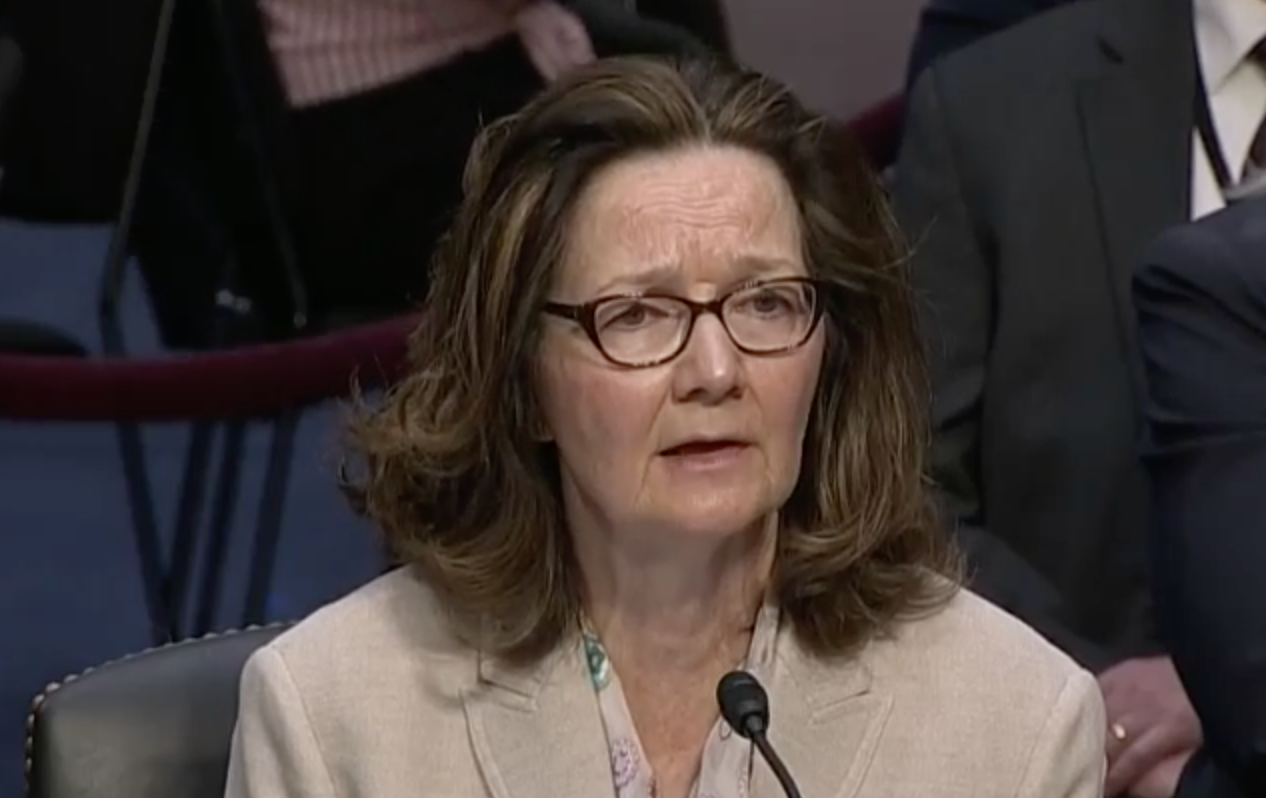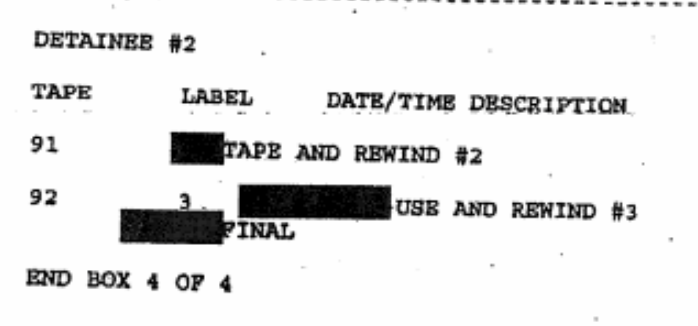The traditional media is catching up to my post the other day focusing on Robert Eatinger, the CIA lawyer who referred Senate Intelligence Committee staffers for criminal investigation. Welcome traditional media!!
Just to expand the discussion of how deeply involved CTC’s lawyers — including, but not limited to, Eatinger — have been in torture, I thought I’d expand on my post from the other day with a timeline of CTC documents and consultation, most from its legal team, that might be among the 1,600 mentions of Eatinger in the Senate Torture Report that Dianne Feinstein referred to the other day.
I should note that for most, if not all, of the CIA’s Detention and Interrogation Program, the now acting general counsel was a lawyer in the CIA’s Counterterrorism Center—the unit within which the CIA managed and carried out this program. From mid-2004 until the official termination of the detention and interrogation program in January 2009, he was the unit’s chief lawyer. He is mentioned by name more than 1,600 times in our study.
Note, some of this information relies on the OPR report; at least three of CTC’s lawyers refused to cooperate with that report, two based on advice of counsel. Remember too that, just as happened with the SCIF CIA made the Senate Intelligence Committee use, between 10 and 61 torture documents disappeared from DOJ’s OLC SCIF during the period when OPR was working on its report.
April 2002: Months before the first torture memo, CTC’s lawyers, in consultation with NSC and DOJ, approved 24-48 hours of sleep deprivation for use with Abu Zubaydah (who, remember, was still recovering from life-threatening bullet wounds). The torturers promptly exceeded those limits. So CTC, on its own, approved the new amounts because, they claimed, Abu Zubaydah hadn’t suffered any adverse consequences. (See PDF 113-114)
After consulting with the NSC and DOJ, CTC[redacted] originally approved 24-48 hours of sleep deprivation.
In April 2002 CTC[redacted] learned that due to a misunderstanding, that time frame had been exceeded.
However, CTC[redacted] advised that since the process did not have adverse medical effects or result in hallucinations (thereby disrupting profoundly Abu Zubaydah’s senses or personality) it was within legal parameters.
After August 1, 2002: After the Bybee Memos laid out which torture techniques were permitted, then, CTC chief lawyer Jonathan Fredman sent out legal guidance to the torturers in Thailand. Rather than relying on the Bybee Memos, he relied on a July 13, 2002 John Yoo memo, purportedly prepared without the knowledge of Bybee (but, given the timing, probably written in response to Chertoff’s refusal to provide pre-declination andwith coaching from David Addington). The earlier memo lacked some of the key caveats of the later ones.
September 6, 2002: On September 4, 2002, Jose Rodriguez and a lawyer from CTC briefed Nancy Pelosi and Porter Goss on torture. The following day, CIA started discussing destroying the torture tapes. Then, on September 6, a lawyer from CTC altered the record of the briefing to Pelosi and Goss. (see PDF 84 and PDF 11-12)
October 2, 2002: CTC top lawyer Jonathan Fredman briefs Gitmo about torture and says a number of inflammatory things about detainee treatment.
December 24, 2002: CTC completes memo advocating for destruction of torture tapes.
Early 2003: After DOJ told CIA’s Inspector General to develop its own set of facts for review of any criminal liability in torture, John Yoo and Jennifer Koester start freelancing with CTC’s lawyers to develop the “Legal Principles” or “Bullet Points” document which expanded on the analysis officially approved by OLC. Koester told DOJ’s Office of Professional Responsibility the document would be used to assess the legality of the torture.
She understood that the Bullet Points were drafted to give the CIA OIG a summary of OLC’s advice to the CIA about the legality of the detention and interrogation program. [Koester] understood that the CIA OIG had indicated to CTC[redacted] that it might evaluate the legality of the program in connection with its investigation, and that the Bullet Points were intended to demonstrate that OLC had already weighed in on the subject.
June 16, 2003: In her review, Koester took out language CIA had included saying that “comparable, approved techniques” to those approved in the Bybee Memo did not violate law or the Constitution. But when CTC’s lawyers sent the “Bullet Points” back to OLC in 2003 as an attempted fait accompli, that language had been inserted back into the memo.
April 2004: Eatinger takes over as top CTC lawyer.
Unknown date: CTC’s lawyers write a declination memo recommending against charges for Salt Pit manager Matt Zirbel in the murder of Gul Rahman based on (according to Jay Bybee’s characterization) an entirely intent-based exoneration. (see footnote 28)
Notably, the declination memorandum prepared by the CIA’s Counterterrorism Section regarding the death of Gul Rahman provides a correct explanation of the specific intent element and did not rely on any motivation to acquire information. Report at 92. If [redacted], as manager of the Saltpit site, did not intend for Rahman to suffer severe pain from low temperatures in his cell, he would lack specific intent under the anti-torture statute. And it is also telling that the declination did not even discuss the possibility that the prosecution was barred by the Commander-in-Chief section of the Bybee memo.
May 11, 2004: White House meeting, possibly attended by Eatinger, at which White House lawyers tell CIA not to destroy torture tapes.
June 2004: According to John Rizzo, Eatinger attends White House meeting at which White House lawyers instruct not to destroy torture tapes.
August 4-5, 2004: CTC lawyers provide Daniel Levin additional information on waterboarding; the Torture Report found this information to be inaccurate.
August 19, 2004: Another CIA letter, from a lawyer other than John Rizzo, the Torture Report found to be inaccurate.
September 5, 2004: Another CIA letter, from a lawyer other than John Rizzo, the Torture Report found to be inaccurate.
September 19, 2004: Another CIA letter, from a lawyer other than John Rizzo, the Torture report found to be inaccurate.
February 2, 2005: A CTC lawyer worked closely with Daniel Levin to try to finish the Combined Memo before Levin moved to NSC. At that point, the Memo did not include waterboarding. Nevertheless, Levin did not complete it, and Steve Bradbury would add waterboarding back in when he completed the memo that April.
Febraury 14, 2005: CTC panics because Congress might hold hearings into detainee treatment.
March 1, 2005: Steven Bradbury’s main contact for Combined and other torture memos is a CTC attorney. The Torture Report found information used in these memos to be inaccurate.
March 2, 2005: CTC sends Re: Effectiveness of the CIA Counterintelligence Interrogation Techniques to Steven Bradbury for use in Special Needs argument in torture memos. Similar memos that have been released have made demonstrably false claims. John Rizzo says CTC lawyers were involved in drafting this document.
April 15, 2005: CTC sends Briefing Notes on the Value of Detainee Reporting to Steven Bradbury for use in Special Needs argument in torture memos. Similar memos that have been released have made demonstrably false claims. Rizzo says CTC lawyers were involved in drafting this document.
May 10, 2005: Steven Bradbury completes two OLC memos — the Techniques Memo and Combined Memo — that the Torture Report found are based on inaccurate information.
May 30, 2005: Bradbury completes a third OLC memo — the CAT Memo — that the Torture Report found is based on inaccurate information.
November 8, 2005: The day CIA destroyed the torture tapes, someone from CTC/LGL gave HPSCI Chair Pete Hoekstra a briefing with no staffers present. (see page 32) The briefing was included in a summary of all Congressional briefings completed that day.
November 8, 2005: Eatinger and another CTC lawyer claim there is no legal reason to retain the torture tapes, in spite of several pending legal requests covering the videos. Jose Rodriguez orders their destruction.
January 25, 2006: Another letter from a lawyer other than John Rizzo that Torture Report may have found to be inaccurate.
April 19, 2006: Fax from a lawyer other than Rizzo that Torture Report may have found to be inaccurate.
May 18, 2006: Letter from a lawyer other than Rizzo, claiming torture techniques would be used for safety reasons, the Torture Report may have found to be inaccurate.
Update: h/t to DocEx blog for some additions to this timeline.


